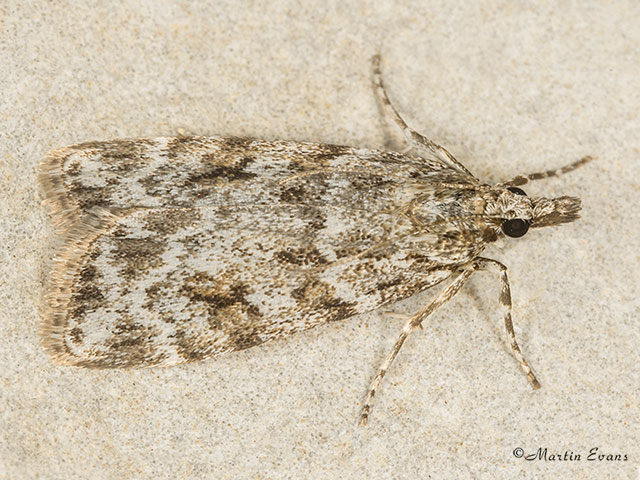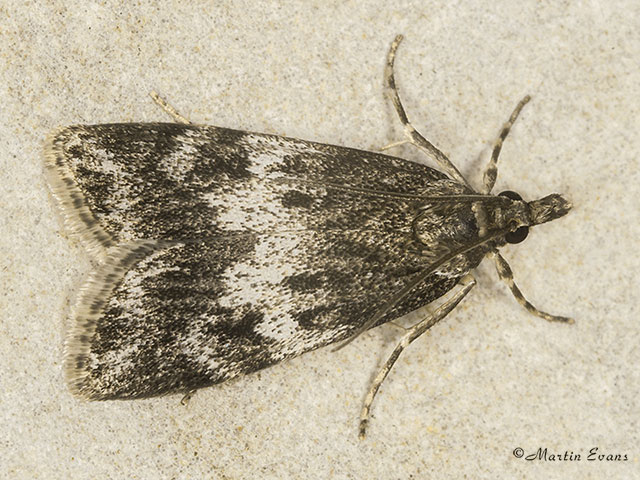Crambidae
63.064 Common Grey Scoparia ambigualis (Treitschke, 1829)
Common
Similar species: Eudonia delunella has more contrasting dark markings along the leading edge of the forewing and lacks the space between the large marking at two-thirds and the outer central crossline.
Forewing: 8 to 11mm
Habitats: Woodland, parkland, scrub, downland, heathland, moorland and gardens.
Habits: The moth rests on tree trunks and rocks by day and is easily disturbed. It flies from dusk and later comes to light.
Foodplant: The larva feeds from a sparsely woven silk tube or spinning on several unconfirmed species of moss. In captivity they will eat Common Haircap Moss Polytrichum commune, Little Shaggy-moss Rhytidiadelphus loreus and Broom Fork-moss Dicranum scoparium. Other possible foodplants are Bank Haircap Moss Polytrichastrum formosum, Red-stemmed Feather-moss Pleaurozium schreberi and Swan's-neck Thyme-moss Mnium hornum. It has also been recorded feeding at the stem base and upper rootstock of Common Valerian. It pupates in a dense cocoon covered in frass and debris or moss.






